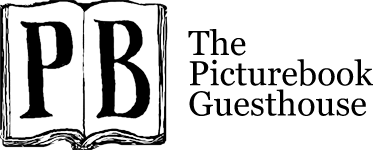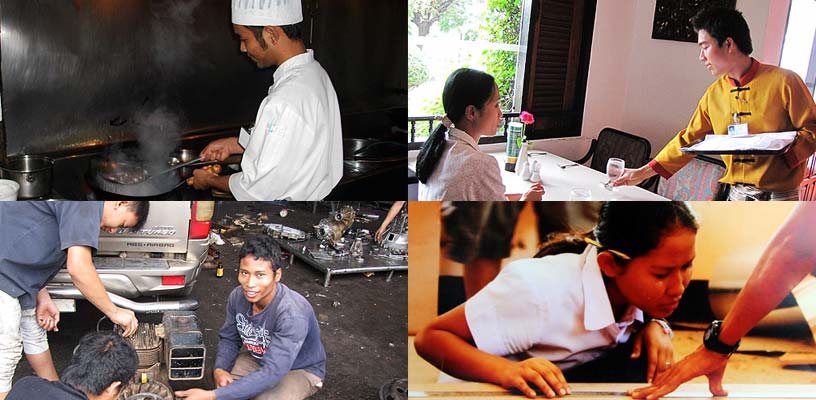Our local partners
From the sandblasted glass windows to the towel rack, the Guesthouse rooms contain one-of-a-kind artwork elements created in partnership with Youth Connect’s other social enterprises. All of these social enterprises also function as apprenticeship and training programs, where migrant youth learn from professionals to increase and specify their skill base in a particular area of interest.
So in addition to manufacturing locally-sourced, environmentally sound, unique products, these enterprises also promote education and skills training to promote a better future for the community’s young adults.
Wood and Furniture Studio
The studio, where apprentices hone their carpentry skills under the supervision of local carpenter extraordinaire Pi Glai, is responsible for the teak-and-rubber-treewood furniture pieces. Each piece is originally designed and made of locally-sourced wood. No new teak whatsoever was used in any item of furniture.
Youth Connect spent months sourcing and restoring ancient teakwood found in the backyards and condemned houses of Mae Sot. We are committed to sustainable forestry and combining recycled teak with rubber tree wood, which is the most sustainable wood in the world, seemed to satisfy this commitment.
The Puzzlebox Arts Studio
Puzzlebox trains apprentices in a variety of artistic styles and skill sets ranging from basic drawing to ceramics to batik to sandblasting. The room themes, sandblast and mural designs were all conceived at this amazing studio. Mentor artist Komol made the ceramic door signs, tiles, key chains and the P for the main sign. Sein Sein Lin created the batik curtains and bed runners; everyone worked together on painting and details.
The 2Wheels bike shop
Normally focusing on apprenticeships in mechanics, bicycle repair and the creation of three-wheeled bikes for people with physical disabilities, the bike shop contributed the unique bicycle design elements you find on site, as well as some of the sheet metal works in the garden.
Finally, the garden itself was planned and designed by a team comprised of some of our current staff. The Youth Connect Director himself helped dig the pond.
There is not a single part of the guesthouse grounds that was not cooperatively and originally produced. Every aspect of The Picturebook is singularly hand-made but also represents a part of a participatory, community-based production model.






Leave a Reply